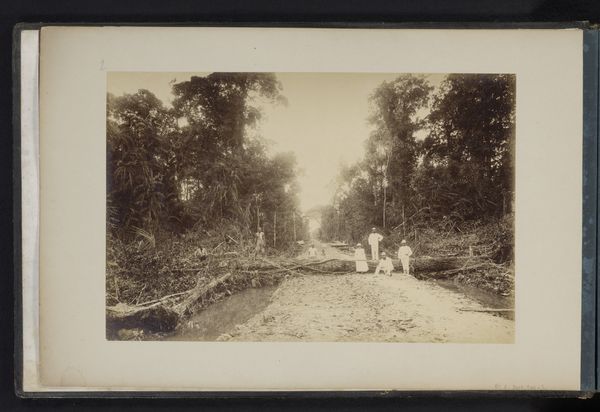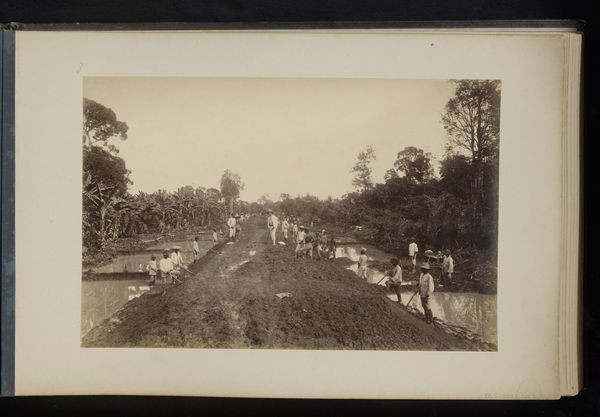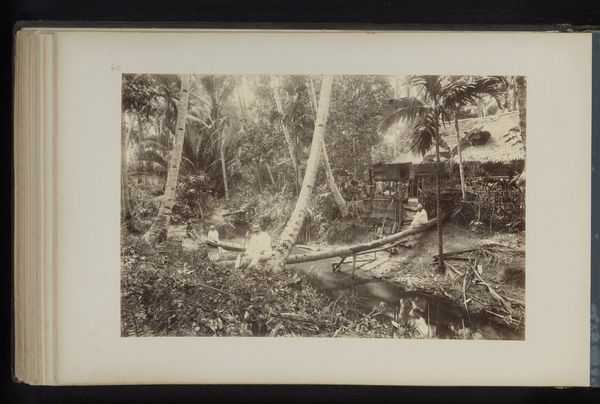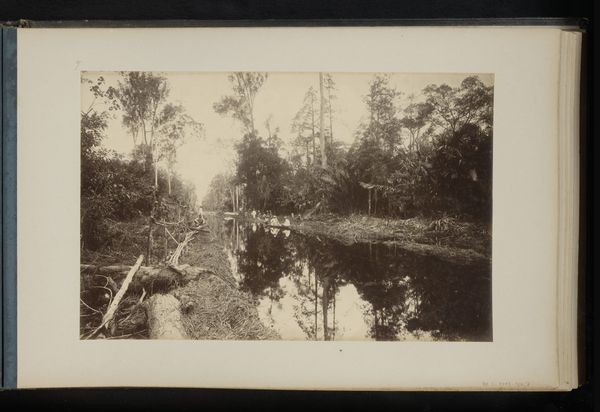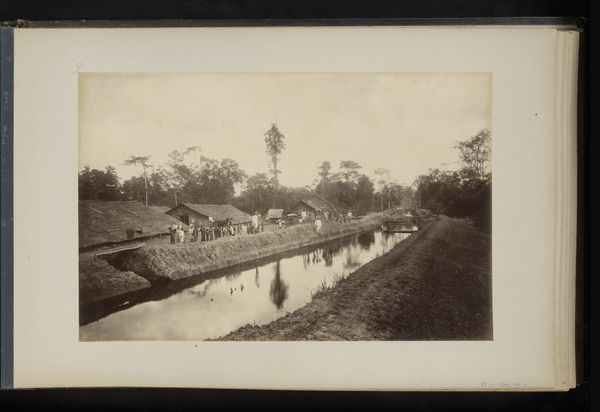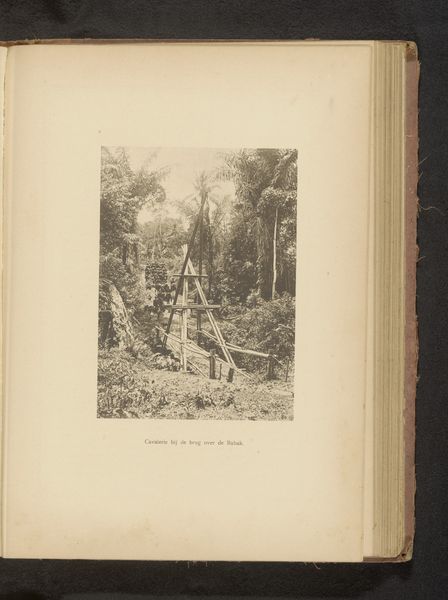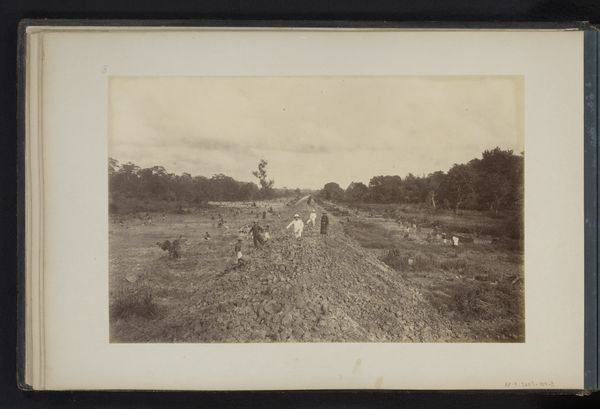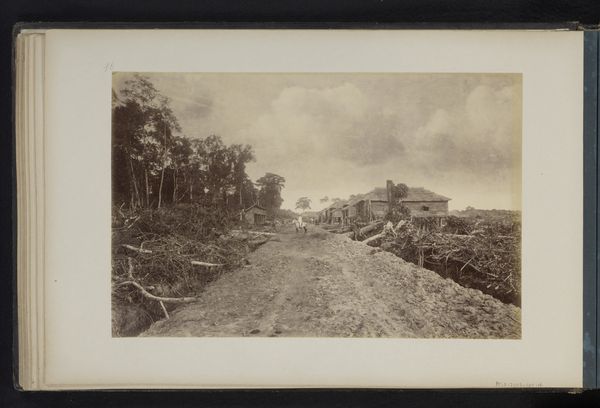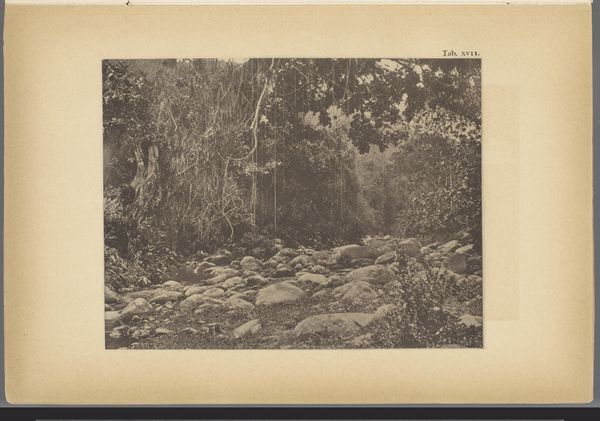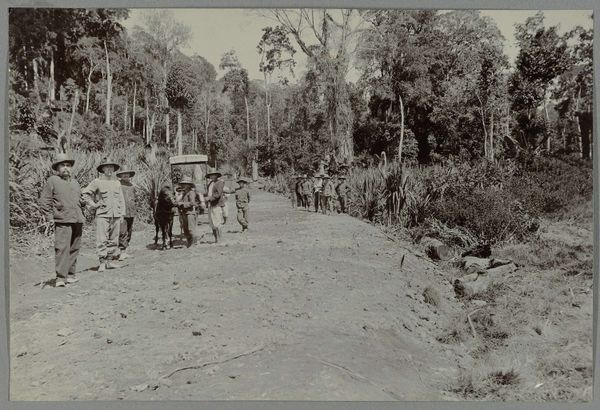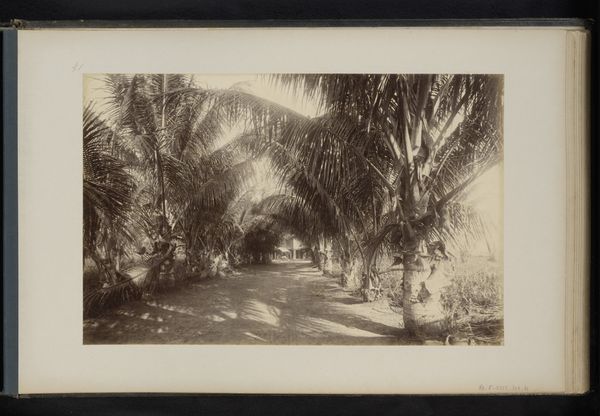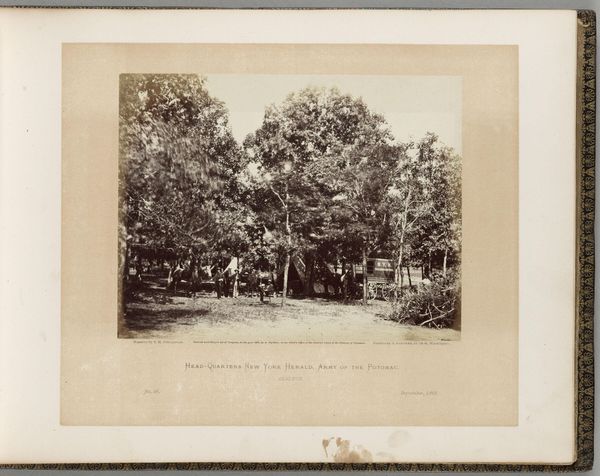
Werkzaamheden aan de drainage op de Stabat plantage, Sumatra c. 1890 - 1900
0:00
0:00
photography, gelatin-silver-print
#
landscape
#
photography
#
orientalism
#
gelatin-silver-print
Dimensions: height 242 mm, width 367 mm
Copyright: Rijks Museum: Open Domain
Curator: Here we have "Werkzaamheden aan de drainage op de Stabat plantage, Sumatra," or "Working on the drainage at the Stabat plantation, Sumatra." It's a gelatin silver print dating from around 1890 to 1900, housed here at the Rijksmuseum, and attributed to Heinrich Ernst & Co. Editor: Wow, a gelatin silver print capturing a tropical locale. There is a haunting quality to it, an unsettling beauty. I am immediately drawn to the contrast, those shadowy trees looming on the left versus the open sky further down the channel, framing that human activity. Curator: It's a striking image. Note how the eye is drawn along that sharply receding canal. It carves a line through the scene, physically and metaphorically shaping the land. Look at the groups of workers, some waist-deep in the trench, others lining the banks. Editor: That receding line creates this illusion of endlessness. It really makes you question the scope of the operation. There is something dehumanizing about the repetition, though. What strikes me, too, is how the light interacts with the scene – reflecting harshly off the water and damp earth, obscuring individual features. It highlights the systematic nature of the project. It reminds you how difficult and draining it would be, especially physically. Curator: Precisely, the near monochrome and stark contrasts really underscore the laborious process. The viewpoint, placing us above and slightly removed, is also revealing. It suggests an overview, control, almost a surveillance. Do you find it lends to the photo’s exotic orientalism? Editor: Yes, absolutely. There’s a palpable sense of distance, an implied separation between the viewer and the people doing the actual work, further emphasized by that elevated angle, that supervisory gaze. But beneath the "orientalist" gaze, there is an underlying feeling of something… amiss. I suppose the photo invites us to consider what wasn't photographed or discussed—the social and political backdrop. Curator: Indeed. Looking at the light and shadow, and that canal stretching far into the horizon, it's clear that there is much more to this single snapshot. Editor: This picture reminds us that a seemingly straightforward depiction can ripple with unspoken questions. It's quite thought-provoking, really.
Comments
No comments
Be the first to comment and join the conversation on the ultimate creative platform.
